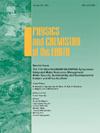评估煤炉活动对空气质量的影响:综合时空分析
IF 3
3区 地球科学
Q2 GEOSCIENCES, MULTIDISCIPLINARY
引用次数: 0
摘要
空气污染对公众健康和环境系统构成严重威胁,主要由煤炉作业等工业活动造成。本研究采用克里格法和主成分分析法等先进的空间分析技术,评估这些活动对指定研究区域空气质量的影响。本研究还采用了空气质量指数(AQI)来评估空气质量。此外,还使用 MinMaxScaler 对家庭数量、煤炉、平均收入、平均成本和空气质量指数这五个关键变量进行了归一化处理,以便进行比较分析。结果表明,研究区域南部和西部的污染物浓度最高,这与空气质量指数值高、煤炉和工业活动密集有关。PCA 结果显示,城市地区主要受到二氧化碳和二氧化硫的影响,对空气质量指数有显著影响,而农业用地和其他类型的土地(牧场、森林、旱地、荒地)则表现出不同的主要污染物。研究发现,农业用地主要受二氧化硫、二氧化碳和一氧化碳的影响。此外,时间分析表明,从 2003 年到 2024 年,煤炉作业每年增加 10%,导致污染水平上升。空气质量指数优化结果还表明,煤炉数量与空气质量指数之间存在很强的负相关关系,这表明减少煤炉数量可以降低空气污染水平。这些发现凸显了工业排放在空气质量恶化中的重要作用,并强调了采用清洁技术、减少煤炉使用和加强监管措施的必要性。本文章由计算机程序翻译,如有差异,请以英文原文为准。
Assessing the impact of coal furnace activities on air quality: A comprehensive spatial and temporal analysis
Air pollution is a critical threat to public health and environmental systems, primarily driven by industrial activities such as coal furnace operations. This study uses advanced spatial analysis techniques, including kriging and Principal Component Analysis (PCA), to assess the impact of these activities on air quality in a designated study area. The Air Quality Index (AQI) is also employed to evaluate air quality in this research. Additionally, five key variables—number of households, coal furnaces, average income, average cost, and AQI—are normalized using the MinMaxScaler for comparative analysis. Also, the results indicate that the southern and western regions of the study area have the highest pollutant concentrations, correlating with high AQI values and the density of coal furnaces and industrial activities. The PCA results show that urban areas are mainly affected by CO2 and SO2, significantly influencing the AQI, while agricultural land and other types of land (rangeland, forest, dryland, barren land) show varying dominant pollutants. Agricultural lands were found to be primarily impacted by SO2, CO2, and CO. In addition, a temporal analysis reveals a 10% annual increase in coal furnace operations from 2003 to 2024, contributing to the rise in pollution levels. The AQI optimization results also indicate a strong negative correlation between the number of coal furnaces and AQI, suggesting that reducing the number of coal furnaces can lower air pollution levels. These findings highlight the significant role of industrial emissions in worsening air quality and emphasize the need for cleaner technologies, reduced coal furnace usage, and stronger regulatory measures.
求助全文
通过发布文献求助,成功后即可免费获取论文全文。
去求助
来源期刊

Physics and Chemistry of the Earth
地学-地球科学综合
CiteScore
5.40
自引率
2.70%
发文量
176
审稿时长
31.6 weeks
期刊介绍:
Physics and Chemistry of the Earth is an international interdisciplinary journal for the rapid publication of collections of refereed communications in separate thematic issues, either stemming from scientific meetings, or, especially compiled for the occasion. There is no restriction on the length of articles published in the journal. Physics and Chemistry of the Earth incorporates the separate Parts A, B and C which existed until the end of 2001.
Please note: the Editors are unable to consider submissions that are not invited or linked to a thematic issue. Please do not submit unsolicited papers.
The journal covers the following subject areas:
-Solid Earth and Geodesy:
(geology, geochemistry, tectonophysics, seismology, volcanology, palaeomagnetism and rock magnetism, electromagnetism and potential fields, marine and environmental geosciences as well as geodesy).
-Hydrology, Oceans and Atmosphere:
(hydrology and water resources research, engineering and management, oceanography and oceanic chemistry, shelf, sea, lake and river sciences, meteorology and atmospheric sciences incl. chemistry as well as climatology and glaciology).
-Solar-Terrestrial and Planetary Science:
(solar, heliospheric and solar-planetary sciences, geology, geophysics and atmospheric sciences of planets, satellites and small bodies as well as cosmochemistry and exobiology).
 求助内容:
求助内容: 应助结果提醒方式:
应助结果提醒方式:


